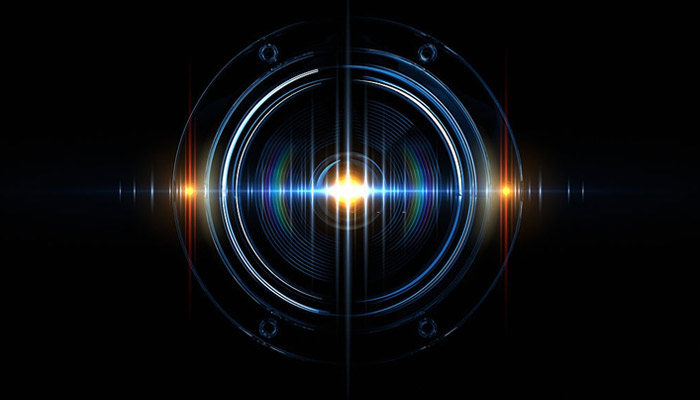A speaker is an essential must have for every music lover but a speaker without the appropriate amplifier to back it up is like fish out of water.
So it is crucial to know which type of amplifier to opt for that compliments your set of speakers. In order to better understand how to power up your speakers you need to have some background knowledge of technical jargon’s that play a role in this process such as:
- Amplifier
- Impedance Matching
- Sensitivity
Speakers are present everywhere from your car to wireless earbuds. In order to buy best Bluetooth speakers, one must have a knowledge of its Amplifiers & basic working of speakers.
This article enables you to properly power up your speaker with the sound knowledge of amplifiers and the impedance matching and what is implied by the sensitivity of your device.
Amplifier as the name suggests helps intensify the audio input of the speaker so that what you hear as an output is an amplified version of the sound you fed it. But does your speaker even require you to purchase one is the real question.
Active Speakers
- The active speakers have an in-built amplification system so if you own an active speaker then you can skip this part of the article. Most modern wireless and cheap Bluetooth speakers fall in the category of active speakers. The downside to this though is that you cannot upgrade your system with a new amplifier device.
Passive Speakers
- The passive speakers require an independent amplifier to function. The higher volumes achieved using speakers are by means of amplifiers so if you own a passive speaker then this is the article for you.
Your choice of amplifier depends upon where you wish to utilize the speakers.
It could be in your car or your home cinema or for your computer. But in any case these are some of the factors you should keep in mind while selecting an amplifier:
Power Rating
- Check the power rating of the amplifier before buying to make sure it meets your requirements. It is necessary to determine the headroom before purchasing an amplifier i.e.
- you need to know what the average output power you desire is and what is the maximum power handling capability of the amplifier. Based on this information select your amplifier otherwise you may end up damaging the device.
Input Connections
- Select an amplifier with a variety of input port options for instance USB ports and auxiliary ports. This allows to plug in a wide range of devices to your speaker making the device multipurpose.
Frequency Range
- When selecting an amplifier look up the frequency range it offers to cover up. It goes without saying that the larger the frequency range the better.
High SNR
- SNR stands for Signal to Noise Ratio. This refers to the noise content of the audio signal. In order to have minimum to no noise content you should be mindful of selecting an amplifier with higher SNR.
First let’s look into what is impedance matching.
This is an electronic technique that allows maximum power transfer between an input source and output load. So in case of a speaker, we want to maximize power transfer between the amplifier and the speaker through this technique.
Now moving on to how this is achieved. Impedance matching refers to the ohmic reading of both the speaker and the amplifier. You can either look up an amplifier whose resistance value matches that of your speaker or plug it into one of higher ohmic value.
This is because the speaker puts a load on the amplifier and if the amplifier is not compatible with your speaker’s output demand it could result in unsustainable damage to your device. So be careful in deciding on the right amplifier for your speaker set or consult one of the sales assistants.
Commonly the impedance for a speaker ranges from 4 ohm, 6 ohm, 8 ohm or even 32 ohm. So predetermine the required output of your speaker and what purpose you intend to use it for and based on this choose the right impedance that compliments your needs.
Sensitivity refers to the amount of acoustic energy generated by the speaker for a given amount of power.
In other words what is the maximum achievable volume for a certain amount of power being provided to the speaker?
The knowledge of sensitivity can help you make the right decision. Here are some of the things you can figure out if you have idea of the sensitivity of your speaker:
- Choose the right amplifier
- Choose the right stereo receiver
- Prevent your device from damages
- Determine a threshold for required power
- Decide on best speaker placement
With all the necessary background information the powering up procedure becomes relatively simple to comprehend.
The overall procedure is not at all cumbersome, it’s just about knowing the right things and what goes where.
Now we can safely move onto plugging up our device and making the best use out of it. Here is a step by step procedure of how to power up your speaker set:
Step: 1
- Get your equipment in order i.e. the speaker, the amplifier and the connecting cables.
Step: 2
- Make sure that the amplifier is in accordance with your speaker’s impedance matching value which is typically in ohms.
Step: 3
- Check the power rating of both the speaker and the amplifier. It is always a good practice to review the power rating values before plugging in the device.
Step: 4
- Find the power cable that matches the port on the amplifier.
Step: 5
- Then just plug in your device and enjoy the melodious experience your speaker has to offer.
- Beware of the serial and parallel connection of wires while dealing with the power cable in step 4 as it could result in either enhancing the impedance level or diminishing it.
- Recheck the impedance of the devices before giving it power.
- Unplug the device not just switch it off while making adjustments in the set up.
“If the wires heat up turn off the power immediately as it could result in sparking. Call a technician to look it over.”
Hope you learnt to power up speaker in this guide.








